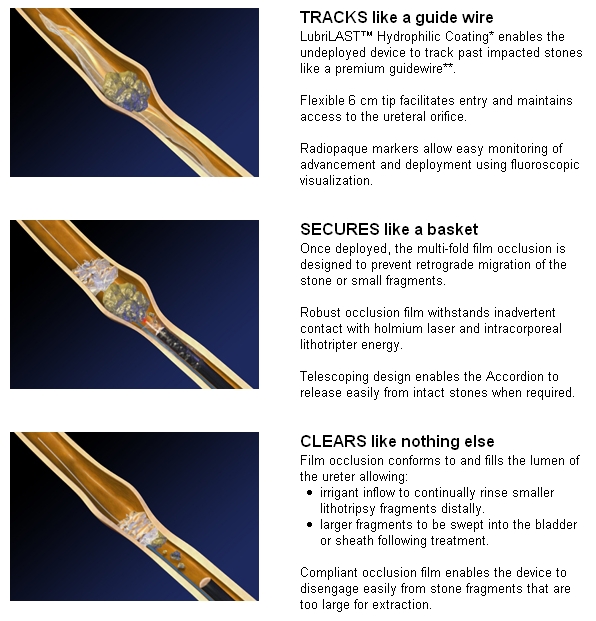Positioned for growth as procedure shift from the hospital to the office and clinic, Percutaneous Systems, Inc. (PercSys) develops devices that make urologic and endoscopic procedures easier, less traumatic and more effective therapeutically. Many of the company’s products facilitate the introduction of catheters and other instruments for procedures that are moving from the hospital into an office environment.
Approximately 5 percent of Americans will be affected by urinary stones at some point in their life. Stone disease is among the most painful and prevalent of urologic disorders. If a stone becomes large enough it can block or otherwise create pressure, pain and infection in the kidney or ureter, the tube that carries urine from the kidneys to the bladder. Many patients experiencing urinary stones can be managed with medications and large amounts of fluids. In those patients with larger stones, external or minimally invasive surgical intervention may be required.
Stone management device cuts down on operating time, maximizes comfort
The PercSys Accordion Stone Management Device can be used to entrap and remove stones and other foreign objects from the ureter. The device combines the utility of multiple endoscopic stone management tools into a single device. The Accordion tracks past the stone like a guidewire and can be monitored with fluoroscopic or endoscopic imaging.
Once formed, the device’s film occlusion conforms to and fills the ureter, and is designed to prevent retrograde migration of stone fragments. During stone fragmentation, the Accordion device facilitates distal rinsing of smaller fragments to keep the field of view clear. Following fragmentation, the device can easily sweep larger fragments into the bladder or a ureteral access sheath, thereby eliminating tedious and time-consuming serial basketing of individual fragments. These benefits combine to simplify and shorten endoscopic lithotripsy procedures.
Single pass treatment for urethral strictures
A narrowing of the urethra, the tube that carries urine from the bladder through the penis during urination, is called a stricture. This narrowing may be caused by several factors, such as infection, trauma, or even previous treatments. The PercSys Cystoglide Dilating Urethral Introducer uses the lubricity of its ViaShield film and its Everting Technology to cause radial dilation with less axial force than a noneverting urethral device. This device is provided sterile for single use in order to dilate urethral strictures in a one-step procedure; there is no need for repeat passes through the urethra.
Urethral introducer
PercSys’ Cystoglide Urethral Introducer allows the physician to gain access to the bladder for a diagnosis or to treat conditions of the bladder via the urethra, so that the physician can introduce catheters and other instruments in order to gain a diagnosis or treat the bladder condition. Initially contained inside the sterile Cystoglide device is PercSys’ proprietary ViaShield film. The ViaShield film is a thin, lubricious material that, when deployed by forms a barrier between tissue and instruments. This protects the tissue while enabling single or multiple entries into the urinary tract.
